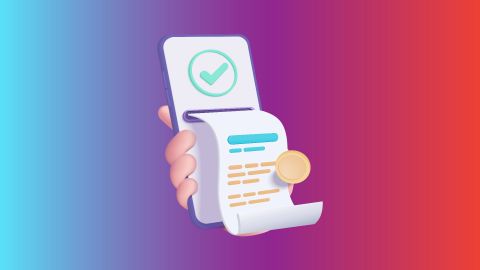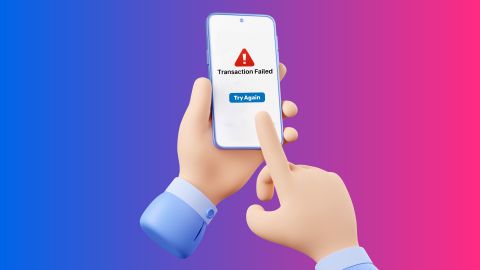Explore the essential steps to install an analog KW meter, providing you with a reliable way to measure power usage in your system.
Analog hour meter installation and analog KW meter guide
-
-
Analog meters have been a staple in measuring and monitoring various electrical parameters in both industrial and residential settings. These devices, often used to track hours of operation for machinery or monitor power consumption, offer reliability and ease of use. While digital meters are becoming increasingly popular, analog meters continue to be valued for their simplicity and cost-effectiveness. This blog will explore the different types of analog meters, provide a guide to installing an analog hour meter, highlight the benefits of using these meters, and offer maintenance tips for optimal performance.
For quick and easy electricity bill payment, explore reliable online options like Bajaj Pay, the BBPS platform on Bajaj Finserv.Types of analog meters
Analog meters come in several types, each suited for specific applications. Common types include:- Analog hour meters: These are used to measure the running time of machines and equipment. They are often found in industries to monitor maintenance intervals.
- Analog kilowatt (KW) meters: These meters are used to measure electrical power consumption in kilowatts. They provide valuable data on the energy used by appliances or machinery.
- Analog voltmeters and ammeters: Voltmeters measure voltage levels, while ammeters measure current. Both are crucial for assessing the health of electrical systems.
- Analog frequency meters: These measure the frequency of an alternating current (AC) signal. They are used to ensure the proper functioning of power systems.Each type of meter is designed for a specific purpose, and the choice depends on the measurement requirements of the user.
A step-by-step guide to installing an analog hour meter
1. Choose the right meter: Select an analog hour meter suitable for your equipment’s voltage and current rating.
2. Disconnect the power supply: Always ensure the power is turned off to avoid electrical hazards during installation.
3. Mount the meter: Use screws or brackets to secure the meter in a suitable location, ensuring it is easily visible.
4. Connect the wiring: Follow the wiring diagram provided with the meter. Connect the input terminals to the power source and the output terminals to the equipment being monitored.
5. Test the installation: Once the wiring is complete, turn the power back on and check the hour meter to ensure it is functioning properly.
6. Calibration: Some analog hour meters may require calibration to ensure accurate readings. This can usually be done by adjusting the meter’s dial according to the manufacturer’s instructions.
By following these steps, you can easily install an analog hour meter to keep track of machine usage and maintenance needs.Benefits of using analog hour and KW meters
- Cost-effective: Analog meters are generally more affordable compared to digital alternatives.
- Durability: These meters have fewer components that can fail, making them reliable for long-term use.
- Simplicity: With their straightforward design, analog meters are easy to read and operate.
- No need for batteries: Analog meters do not rely on batteries, reducing maintenance requirements.
- Accuracy: When properly installed, analog meters provide accurate readings for monitoring power consumption or machine usage.
Accuracy of analog meters
The accuracy of analog meters depends on several factors, including the quality of the components and the calibration process. While analog meters are generally accurate for most applications, they can have slight deviations over time due to mechanical wear. Factors like vibration, temperature changes, and dust can also affect their precision. To maintain high accuracy, it is important to regularly calibrate the meter and ensure it is used within its specified parameters. Proper installation and maintenance can help preserve the meter’s accuracy for extended periods, ensuring reliable readings.Maintenance tips for analog hour meters
- Keep the meter clean: Dust and debris can impair the functioning of the meter. Regularly wipe the meter to keep it clean.
- Check for wear and tear: Over time, mechanical components of the meter, like the dial and gears, may wear out. Regularly inspect the meter for signs of damage.
- Avoid exposure to extreme conditions: Protect the meter from high temperatures, humidity, and harsh chemicals, which can damage the internal components.
- Ensure proper calibration: Calibrate the meter as per the manufacturer’s instructions to ensure accurate readings.
- Perform routine checks: Periodically test the meter by comparing it with a known standard to verify its accuracy.
-
Recharge and Pay Bills
Mobile Prepaid
Mobile Postpaid
Broadband Bill Payment
Electricity Bill Payment
Bajaj Finserv App for All Your Financial Needs and Goals
Trusted by 50 million+ customers in India, Bajaj Finserv App is a one-stop solution for all your financial needs and goals.
You can use the Bajaj Finserv App to:
You can use the Bajaj Finserv App to:
- Apply for loans online, such as Instant Personal Loan, Home Loan, Business Loan, Gold Loan, and more.
- Explore and apply for co-branded credit cards online.
- Invest in fixed deposits and mutual funds on the app.
- Choose from multiple insurance for your health, motor and even pocket insurance, from various insurance providers.
- Pay and manage your bills and recharges using the BBPS platform. Use Bajaj Pay and Bajaj Wallet for quick and simple money transfers and transactions.
- Apply for Insta EMI Card and get a pre-approved limit on the app. Explore over 1 million products on the app that can be purchased from a partner store on Easy EMIs.
- Shop from over 100+ brand partners that offer a diverse range of products and services.
- Use specialised tools like EMI calculators, SIP Calculators
- Check your credit score, download loan statements and even get quick customer support—all on the app.
Frequently asked questions
What is an analog hour meter used for?
An analog hour meter is used to measure the running time of machines and equipment.
How accurate are analog meters?
Analog meters are generally accurate but may require calibration over time for precise readings.
How do you install an analog hour meter?
To install an analog hour meter, mount it securely, connect the wiring as per the diagram, and calibrate if needed.
What types of analog meters are available?
Common types include hour meters, KW meters, voltmeters, ammeters, and frequency meters.
Are analog hour meters more reliable than digital ones?
Analog hour meters are durable, have fewer components to fail, and do not require batteries, making them reliable over time.
Show More
Show Less




